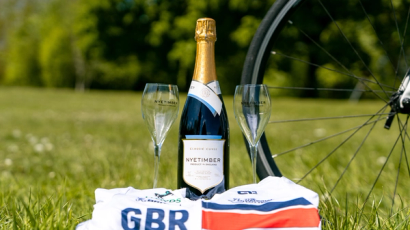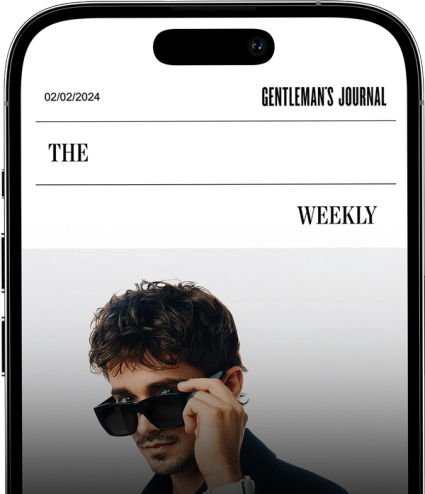

Louis Roederer and Philippe Starck’s unstoppable champagne collaboration
"Brut Nature is the showcase of our most innovative experiments, but also a laboratory for the future in the context of weather patterns that will soon become the norm”
Words: Guy Woodward
When Frédéric Rouzaud, the family owner and CEO of champagne house Louis Roederer, first met Philippe Starck, the prolific designer was adamant about one thing. “Please don’t ever ask me to create a label for you,” said Starck. “You’ll be the tenth champagne house to ask. I’ll never do it.”
Rouzaud didn’t ask. But as the two struck up a friendship, and the designer learned more about the Roederer aesthetic, so Starck wondered if he could do more than simply design a label. Maybe he could help create an entirely new champagne.
Starck told Rouzaud that his favourite fizz was the then relatively niche, ultra-dry, ‘brut nature’. It’s a style arrived at by eschewing the ‘dosage’ of sweet liqueur traditionally added to champagne before bottling to counter its inherent racy acidity (hold onto this factoid; you’ll need it later). And it just so happened that, around the same time as the pair’s friendship was blossoming, so Roederer was experimenting with the style via a clutch of vineyards that were ideally equipped for the purpose.

Jean-Baptiste Lécaillon, Philippe Starck and Frédéric Rouzaud
Roederer is unusual among champagne houses not just in remaining family owned (Rouzaud is the sixth generation to follow the eponymous founder), but in owning the majority of vineyards that provide the raw materials for its wines (most houses rely on bought-in grapes; 70 per cent of Roederer’s come from its own sites). With such resources at its disposal, its winery is something of a R&D playground. And in the blisteringly hot summer of 2003, Roederer made a discovery.
Amid an unprecedented heatwave, 10 of its 250 hectares of vineyards coped particularly well. On the hillsides of the premier cru of Cumières, overlooking the River Marne, these four plots produced full yet balanced grapes with a vivid marriage of refreshing salinity and rich intensity. Such opulence is the ideal platform for the production of a brut nature, which needs overt ripeness to compensate for that lack of‘dosage’. So Rouzaud, encouraged by his conversations with Starck, gave his cellar master, Jean-Baptiste Lécaillon, the green light to make one.
The concept was something of a leap of faith, with Rouzaud admitting that Starck’s “emotional, creative vision… drove us to go much further than we had envisaged”.
“We did exactly the opposite of what we normally do with a new cuvée,” explains Lécaillon. “We started with the idea of the finished product, and then worked back to achieve it.”
After a series of trials in 2003, 2004 and 2005, the 2006 vintage yielded the inaugural Louis Roederer Brut Nature — “In collaboration with Philippe Starck.” Released in 2014, it was the house’s first new cuvée since the launch of Cristal Rosé 40 years earlier — and as an added bonus, Starck designed the label.
The partnership has proved an enduring one, with Starck involved with every vintage since. It’s a cuvée that, due to its makeup, is produced only in hot, dry years that deliver full, optimum ripeness: 2006, 2009, 2012, 2015 and, most recently, 2018, the white and rosé renderings of which were launched in May at a suitably understated party at Paris’s Grand Palais. There, Starck spoke of how his original vision had been for a champagne that was “stripped to the bone — straightforward and authentic”. His latest bottle design reflects the ‘less is more’ vibe, in which, he says, he tries to take away everything that is superfluous.
The designer says the reason he turned down other houses was because he felt there was something deceptive about a bottle marked ‘Starck’ without a ‘Starck’ contribution to the contents. “I had to be involved in the winemaking process itself so that the final bottle would be an honest process and a comprehensive collaboration.”
That same uncompromising approach goes for the wine, too. There’s no hiding place with a champagne sourced from just four plots. But it’s all part of the ongoing adaptation against warming temperatures, says Lécaillon. “Brut Nature is both a response to and a mirror of climate change,” he says. “It’s the showcase of our most innovative experiments, but also a laboratory for the future in the context of weather patterns that will soon become the norm.”
While Brut Nature may offer a practical template from a climatic perspective, it also offers a stylistic template in terms of prevailing fashions. The champagne itself is zesty, zappy, more “sharp”, in Rouzaud’s words — a style that many consumers are now favouring across all forms of wine. And Rouzaud says its success, and the climatic direction of travel, has given Roederer the confidence to rely on nature rather than nurture across its whole portfolio.
Remember that all-important ‘dosage’ — or, in the case of the Brut Nature, the lack thereof? Since Roederer has been making the cuvée, it has reduced the level of this sugary supplement across its other champagnes from 12 grammes per litre to seven or eight. It’s a stylistic decision, says Rouzaud, facilitated by the onset of continually riper harvests, meaning the house no longer needs to compensate for under-ripe grapes.
“Fifty years ago, my father’s challenge was for ripeness,” says Rouzaud. “Today, my challenge is to preserve freshness.’’
Discover the winners of Gentleman's Journal's 2025 Drinks Awards...


